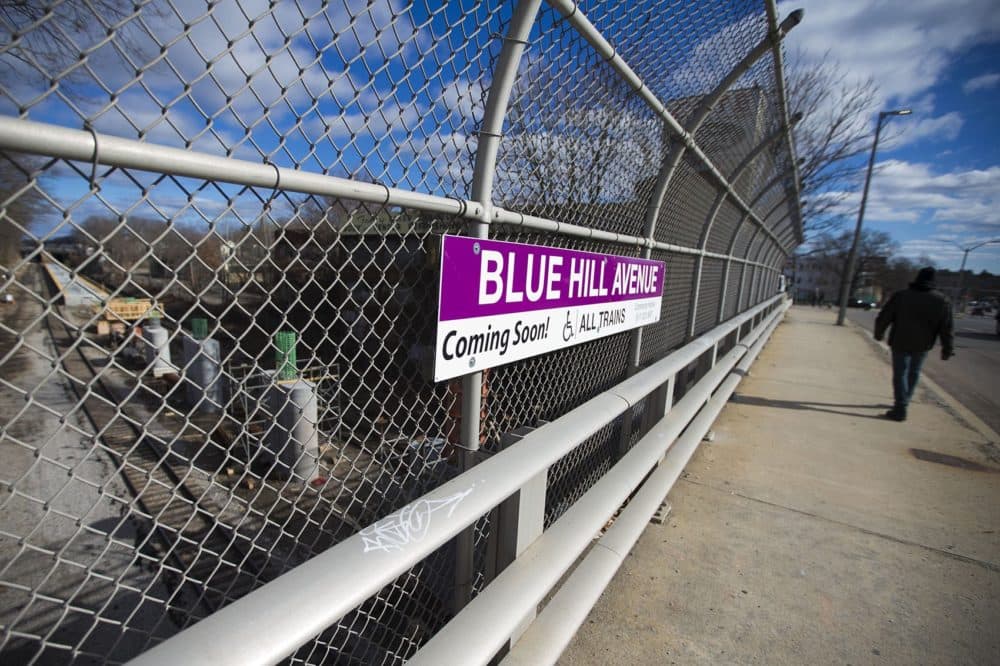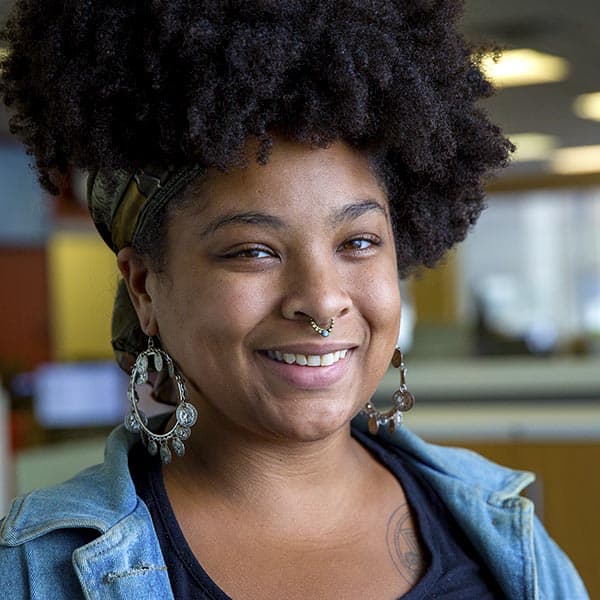Advertisement
Commentary
My Mattapan, My Home

I grew up in Mattapan.
I still live there, right off of the 30 bus line, a short walk from the hub of Mattapan Square. There used to be Brigham’s Ice Cream Shop here, old school with striped walls and shiny metal seats. It closed down and was resurrected a few times — once as an Ashley Stewart, now as a Dunkin’ Donuts. Mattapan Square is lined with stores mostly owned by locals, many of whom are immigrants or first-generation Americans.
I love my neighborhood. It’s where I grew up and it’s where I’m now unearthing myself. I love the bodega across the street from my house and the Jamaican restaurant on River Street, even though they’re mean as hell while serving you. The Super Dollar has pretty much anything you need, including goldfish and bamboo. And who could hate having two hair stores in such close proximity?
For all I love about home, though, there’s a historic relationship between Mattapan and violence that is leaving its inhabitants feeling battered and weary.
This month, 74-year-old Eleanor Maloney was killed outside her home on Mattapan Street, nearby to the bustle of Blue Hill Avenue. Police found Maloney suffering from a gunshot wound and she was pronounced dead at the scene. Maloney, originally from Barbados, was a grandmother and a recent retiree from Boston Medical Center. She was an innocent bystander, a victim of pure chance.
I love my neighborhood. It’s where I grew up and it’s where I’m now unearthing myself.
Often times after a shooting in the ‘hood, the issue of "black-on-black crime" resurfaces. It’s been unearthed recently in the tragic death of rapper and activist Nipsey Hussle, who was gunned down in his neighborhood. I won’t go too much into it here, because it portrays black people as being disproportionately violent and prone to “killing one another.” In reality, all races are statistically more likely to perpetrate crimes against a member of the same race. Factors like proximity and population demographics all play into violence.
Despite my personal take on "black-on-black crime,” there is a very real gun violence problem in Boston. Maloney’s death jumpstarted a rallying cry across Mattapan and other neighborhoods. Anyone who has taken the trolley to Ashmont or the 28 bus up Blue Hill has seen ads, featuring boldly printed quotes from mothers who’ve lost their children to gun violence in the area. None of us are strangers to gunfire.
There’s an immensely popular meme that all people from the neighborhood can relate to. It says “Fireworks or Gunshots? The Hood will never know.” We all solemnly joke about this when Fourth of July comes around.
Reports show promising decreases in crime and homicides in areas like Mattapan and Dorchester, but that doesn’t mean residents feel any safer. There are a number of systemic reasons why violence is higher in neighborhoods like mine. A history of redlining in Mattapan, along with higher rates of poverty and unemployment, all influence incidence of violence. These things are caused by a purposeful denial of access to resources. As gentrification sweeps throughout Dorchester and Roxbury, trickling from Forest Hills and slowly down Cummins Highway and Blue Hill Ave., people are being pushed out or forced to use more and more of their income just to secure housing.
It’s easy and convenient to point at a shooting and call it the problem, instead of addressing the rooted systems that feed the fruit of violence. After Maloney was shot, Mayor Marty Walsh and Boston Police Commissioner William Gross made statements. Gross said, “Our neighborhoods are better than this. Let's give this family some justice. Let's give her some justice."
Gross is absolutely right. Our communities are better than this. Community organizers and activists have been saying this for years: before the new construction and completion of the bike path connecting Mattapan and Milton; before the Stop & Shop on Cummins had an organics section; and before a farmer’s market started in Mattapan Square.
In order to eradicate violence, we have to transform the environments where it breeds.
The men involved in Maloney’s murder have histories of involvement with firearms, a testament to how long the symptom of violence has been misdiagnosed and consequently, mistreated.
After shootings, a common response is an increase in police presence in the area to deter further violence. However, increasing policing or tactical deployments of the Boston Police Department’s Youth Violence Strike Force — who surrounded me and my friends in a Hyde Park cemetery last year based on a false tip — isn’t how we make our communities “better.” It’s how we continue the cycle of violence and trauma. We don’t need justice in the form of more blue flashing lights on every corner. What we need is transformative justice.
Transformative justice, as a philosophy, treats violence as a societal symptom. In order to eradicate violence, we have to transform the environments where it breeds. My community is a thriving, creative place, filled to the brim with innovation and cultural exchange. But there are investments we need to ensure these things continue.
Our communities need better infrastructure, so people don't move out of their neighborhoods. I've seen rising rent and property taxes force out neighbors on my street and beyond. We need more funding for youth arts programs in our schools (BPS high school students and Hyde Square Task Force protested cuts in arts program funding in 2018). We need green spaces that don’t herald new buildings priced way out of current residents’ price point, like the new path stretching from Mattapan Station to Lower Mills. I'm reminded of this every time I drive past the station on River Street, where a new mixed-use development is set to break ground this June.

We need a redesigned transit system, so it isn’t so hard to get from Mattapan into the city, where most of the jobs are. The minimum wage needs to be raised to a living wage, so that people aren’t forced to turn to other avenues to make money. We need more programs that address recidivism, so that the black and brown people who make up the majority of the prison population in Massachusetts have options and resources when they’re released.
Maloney and her family deserve justice for her death. Between now and the time it takes to fully tackle poverty and gentrification and unemployment, our communities need to practice gentleness and accountability with each other. And those with firearms need to invest in deep meditations on the consequences of gun violence.
But if justice is to truly be had, we must address the experiences that shaped the men who took Maloney’s life. If we don’t, more innocent bystanders will be caught in the crossfire. Justice means addressing violence before it’s taken root and cutting the stem before it can bloom. And we can only do this by intentionally investing directly into our communities. Not by policing them.
